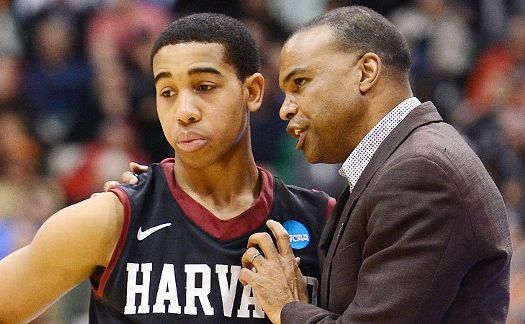Harvard Must Stay the Course After Winning Great Alaska Shootout
Posted by Tommy Lemoine on December 4th, 2013High expectations can sometimes have an adverse effect on a basketball team, magnifying moments of failure and creating unnecessary pressure that otherwise would not exist. After pulling off an unexpected upset over #3-seed New Mexico in last year’s NCAA Tournament, Harvard entered this fall with entirely different expectations from a year ago. Whereas the 2012-13 Crimson squad was largely written off before the year began with star upperclassmen Brandyn Curry and Kyle Casey having withdrawn from school due to an academic scandal, this season’s club returned both of those All-Ivy players in addition to four starters and a strong recruiting class to boot. Needless to say, expectations were sky-high coming into this season. And for a program that only recently became a regular contender in the Ivy League, a presumed conference championship and possible single-digit seed in the Big Dance inevitably meant there was going to be a certain amount of pressure.
So it probably came as a relief for head coach Tommy Amaker that his team— after narrowly losing a winnable game at NCAA-caliber Colorado the Sunday prior—bounced back in resounding fashion over the holiday weekend by knocking off Denver, Green Bay and TCU on its way to capturing the Great Alaska Shootout. Despite playing without Curry and junior big man Kenyatta Smith, both of whom remain out with foot injuries, Harvard managed to win each game by a comfortable margin and was only really pushed in the second half by Green Bay. Guard Wesley Saunders, picked by many to win Ivy League Player of the Year, took home MVP honors by averaging 14 points, eight rebounds and nearly five assists a game, and sharpshooter Laurent Rivard—who struggled from behind the arc in the second half against Colorado—seemed to find his stroke in the final two games in Anchorage, shooting 10-of-24 from deep. Also notable was the Crimson’s dominance on the offensive glass throughout the tournament: The team gathered a combined 43 offensive boards to its opponents’ 23, leading to a bunch of second-chance points.
If there is one attribute that has defined Harvard’s early-season play to this point, however, it might be the team’s balance. While Saunders leads the way in scoring at about 15 points a game, each of the other four regular starters are averaging at least nine points through the first eight games. And sixth man Jonah Travis has been a tremendous frontcourt presence in the absence of Smith, despite playing under 20 minutes a contest. The undersized forward amassed a double-double against Holy Cross to start the season and grabbed eight offensive rebounds in the win over Green Bay, generating additional points down the stretch. Travis, along with the steady Casey and ever-improving Steve Moundou-Missi already make up a stellar frontcourt even without Smith, and when Curry rejoins point guard Siyani Chambers, Saunders and Rivard in the backcourt, the Crimson will be a legitimate eight-deep team with contributors who have all played significant minutes in the past. That’s not even mentioning the young, long players Amaker has at his disposal towards the end of the bench. If pundits are not dubbing this the greatest Ivy League team ever, they are at least touting it as the most athletically gifted—a trait that should ultimately wear down inferior opponents during conference play.
At 7-1 and ranked #2 in the collegeinsider.com Mid-Major Top 25 poll, Harvard has largely taken care of business up to this point. Perhaps the only thing that went wrong over last weekend was that Indiana State was upset by Tulsa in the first round of the Shootout, thus eliminating the chance for Harvard to pick up a quality win against the only other team in the tournament ranked in KenPom’s top 75. Since the Crimson were unable to capitalize against Colorado, only so many opportunities remain on its non-conference slate to pick add some résumé-padding wins. As a result, games like the two against crosstown schools Northeastern and Boston University this week become ever more important as the month presses on. If the Crimson can avoid any further blemishes before the end of December, it will have two golden opportunities to bolster its NCAA credentials when the calendar turns—on January 1 at home against Boston College, and on January 8 at Connecticut. Two wins there, or a split with the one win coming over UConn, would likely set Harvard up nicely for an at-large opportunity should another Ivy hopeful like Princeton edge the Crimson for the conference title. Any additional losses in non-conference play, though, could have Amaker’s team feeling the pressure come March. And when you play in the Ivy, a league without a conference tournament and a schedule that tests your endurance, nothing is guaranteed.










































